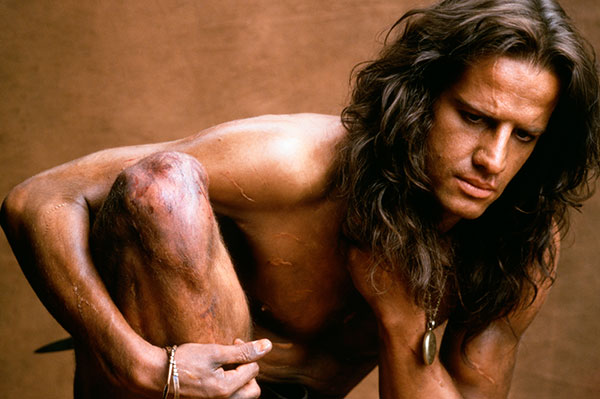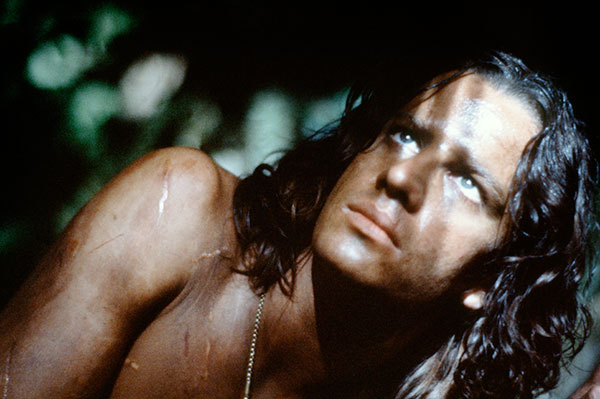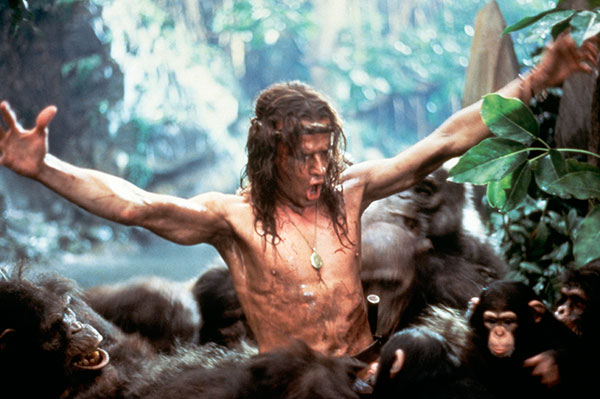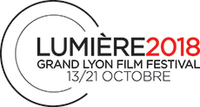Greystoke: The Legend of Tarzan, Lord of the Apes
Rebirth of a myth
Posted on September 28, 2018
Lumière 2018 proposes a rediscovery of Greystoke: The Legend of Tarzan, Lord of the Apes in the presence of Hugh Hudson and Christopher Lambert. A captivating film, this vision of the famous monkey-man revives its image, on the road to oblivion until now. A closer look at a production that was anything but easy.

It all begins with Robert Towne’s script. Towne, the screenwriter of 70s hits Chinatown and Shampoo, and decades later the first two installments of Mission Impossible, decides in the early 80s to take on a new transposition of the legendary Tarzan. Imagined in 1912 by novelist Edgar Rice Burroughs, Towne’s adaptation is more faithful to the book. But the latter, who wants to direct the film, is ousted by Warner studios after the release of his first feature film, Personal Best, a resounding flop. The unfinished script (170 pages long, covering only the jungle scenes) is then entrusted to Hugh Hudson. The filmmaker, off the heels of the success of Chariots of Fire, will develop the character of the ape-man but also tackle the difficulties of a child adapting to life in a wild environment. With new screenwriter Michael Austin (5 Days One Summer), Hudson also decides to show the return of the adult individual to civilization, a universe far different from what the future Lord Greystoke could have imagined and an element never addressed in the Tarzan film saga (barely touched upon in The Adventures of Tarzan in New York by Richard Thorpe).
To play the hero at different ages, many children audition for the first part of the film, but what about the adult Tarzan? Hudson chooses Christopher Lambert, a young unknown from the conservatory, who has just landed minor roles in The Telephone Bar and Une Sale affaire. The actor is selected among hundreds of candidates (including Viggo Mortensen). Lambert prepares himself for the role through an intensive training period of eight months, during which he gets to know the monkeys, and to swing from the vines and climb the trees among the animals, with the help of gymnasts. Thus, the rail-thin Lambert goes from 58 to 84 kilos (128 to 185 lbs.); nothing but muscle. The no-less famous Jane is interpreted by Andie MacDowell, a 26-year-old American model starting out in the cinema. She will have the unpleasant surprise of having her voice dubbed (for the English language version) by Glenn Close, due to her Southern accent, deemed too strong. The cast is joined by experienced actors Ian Holm, Nigel Davenport (already in the credits of Chariots of Fire), James Fox and Shakespearian master Sir Ralph Richardson, who plays the grandfather of the future Lord Greystoke, in one of his last film appearances.

Considering a demanding shooting schedule that will last five months, the team moves to Cameroon to live on the sets built for the film. Suffering from the humidity and suffocating heat, some technicians and extras dressed as monkeys fall ill. Moreover, Hudson and his actors do not have the chance to see the rushes during their Cameroon stay; scenes already shot are sent directly to England. We can imagine the rising concern of the director. Especially considering how difficult it is to film in a jungle… without light. Thus, the jungle is meticulously reconstructed in England on a huge set of Elstree studios, where filming ends after some footage of exteriors in Scotland and Hertfoshire County. In the editing process, Hudson is left with 3 hours of film, reduced to 2h40 (the best version, he declares to the Hollywood Reporter in 2016). But Warner finds the childhood scenes too violent, forcing the director to further edit the film, resulting in the shorter version we know today.
With a budget of $30 million, the movie reassures producers with a triumphant release in March of 1984. Greystoke, The Legend of Tarzan, Lord of the Apes is a success, thanks to the lyrical and highly-honed directing of Hudson and the astonishing makeup skills of Rick Baker (An American Werewolf in London, Gorillas in the Mist), making it impossible to distinguish between the real monkeys and the actors. The movie’s success is also in large part due to Christopher Lambert, whose acting gives the necessary range to Lord Greystoke, revamping a myth that we believed was threadbare. The film gives Lambert credibility; he has undeniably become Tarzan for fans of the monkey-man. We stow away Johnny Weissmuller, Lex Barker and Gordon Scott in the attic, while future productions fall by the wayside in advance. What a tour de force, to be able to re(discover) the film during the Lumière festival in the presence of Hugh Hudson and Christopher Lambert.
Greystoke, The Legend of Tarzan, Lord of the Apes at the Lumière festival: click here.

